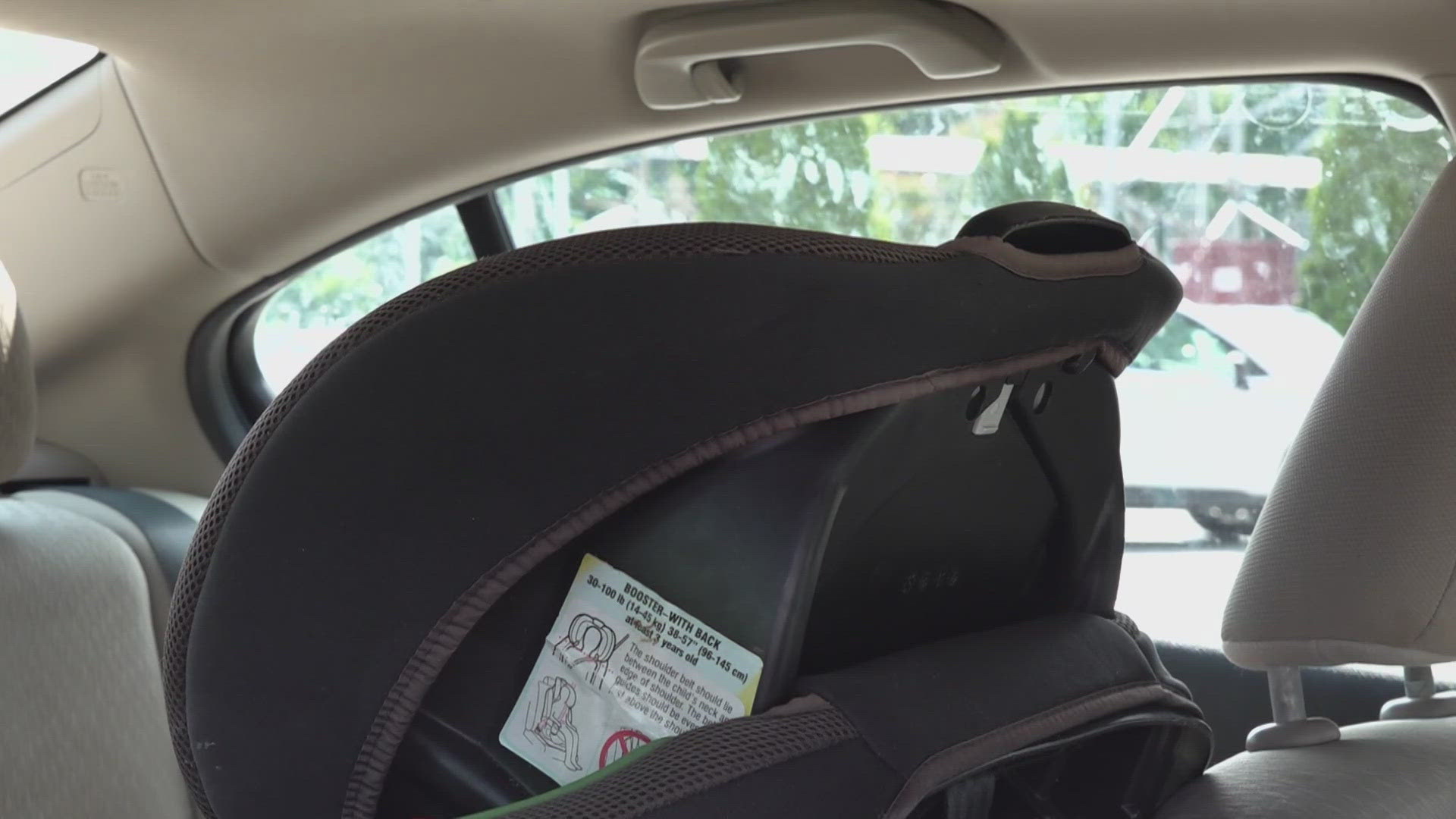GREENSBORO, N.C. — June. July. August. According to Kids and Car Safety.org These months are considered the most dangerous months for families when it comes to the risk of hot car deaths.
Already at least 10 children's deaths in the US are confirmed hot car deaths, another three are expected to be added after toxicology tests are done.
Every state in the lower 48 has had at least one hot car death since 1990. Vermont is the only exception. In some states, the numbers are triple digits.
"In NC at least 46 children have died in hot cars since 1991. One of them was this year and this is going to happen until we have technology in vehicles that will alert the driver, bystanders, emergency contacts, or even police to come to save them," said Amber Rollins, Director, of Kids and Car Safety.
MOMS GO TO D.C. TO PUSH FOR MORE SAFETY REGULATIONS
A few weeks ago, moms from all over the nation met in Washington D.C. to tell their stories and to call on government entities to require change.
The Hot Cars Act of 2021 requires safety measures in passenger cars to reduce injuries or deaths from heatstroke. The act directs the National Highway Traffic Safety Administration to issue a safety standard that includes a system to detect and warn of the presence of an unattended occupant.
"Sadly, that rule is a year overdue and they just extended the timeline for when they're going to issue the proposed rule...which is just the first step in a very long process," said Rollins.
One of the moms who made the trip to D.C. was living in Mebane, NC when her daughter died. She talked about what happened for the first time at this rally.
"It took me about two years to be able to speak, to speak through the grief," said Taylor.
On the anniversary of her daughter Fiona's death, Taylor told her story and called for change.
"I can fight for the technology that could have saved Fiona's life. I can fight for these changes that could save other children," said Taylor.
WHAT YOU CAN DO TO GET YOUR VOICE HEARD ABOUT SAFETY REGULATIONS
Kids and Car Safety.org wants folks to send a hot car letter to Congress. On its website, the information about the Hot Car Act is there, as well as the contact information for government officials in the Department of Transportation and National Highway Traffic Safety Administration. There's even a sample letter that you can use as a guide.
FIONA'S STORY: WHAT HAPPENED THE DAY THE 13-MONTH-OLD DIED IN A HOT CAR
Like many hot car death stories, the routine of the family had been switched up.
"it was not our typical morning, my husband worked at a plant as a manager and that night he got home around 3 am and woke up around 6:30 am," said Taylor.
She says her husband asked her if he could lie down and get more sleep.
"I said, and this is one of my biggest regrets, I said no, I need your help getting the kids out the door," said Taylor.
He was on autopilot because he had been going back and forth to the plant at night. She said, that morning, he just went right there.
Not only was the family's routine different, but Fiona's car seat was different too. They had just changed her car seat from a bucket that you take in and out, to a stationary seat that was turned around.
Taylor's husband didn't discover Fiona until after a full morning of meetings. She says he couldn't even make words on teh phone to tell her what happened.
"My husband, they had such a special bond. He has to live with this every day of his life," said Taylor.
WHAT EVERY DRIVER SHOULD DO IF THEY HAVE KIDS IN THEIR CARS
The Director of Kids and Car Safety calls it the "Look before you lock" checklist.
1-Put a large stuffed animal in the car, it lives there, so anytime you go to buckle your child in, you move that stuffed animal to the front seat so it's a visual cue that your children are with you.
2-We want parents to grab an item that they can't start their day without and we put that on the floor in the backseat, this will help you get in the routine of opening the door and checking the backseat every time you park. An example would be a shoe or a key card to get into work.
WHY HOT CAR DEATHS HAVE BECOME SO WIDESPREAD
"What we know is that in the mid to late 1990s when children were riding in the backseat because overpowered airbags were killing them in the front seat, that's when hot car deaths started happening, they were virtually non-existent before that time this out of sight, having them in the backseat, and then rear-facing car seats, its a recipe for disaster," said Rollins.

